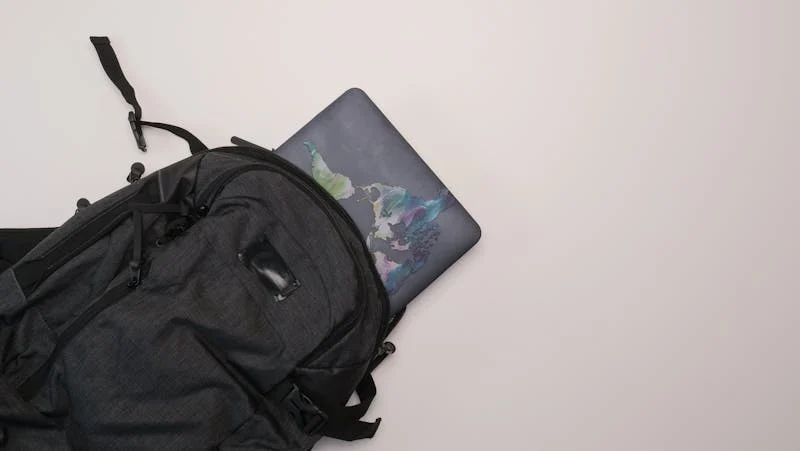Table of Contents
- Introduction
- What Cannot Go In A Carry-On Bag
- Why Are There Restrictions on Carry-On Items?
- Liquids, Gels, and Aerosols
- Exceptions for Liquids in Carry-On Bags
- Sharp Objects
- Flammable Items
- Sporting Goods
- Tools
- Self-Defense Items
- Explosives and Fireworks
- Medical Equipment and Medications
- Electronics
- Food and Beverages
- What Happens If You Attempt to Bring Prohibited Items in Your Carry-On Bag?
- FAQs
- Can I Bring a Lighter in my Carry-On Bag?
- Are There Restrictions on Bringing Alcohol in my Carry-On Bag?
- Can I Bring a Swiss Army Knife in my Carry-On Bag?
- Why Can’t I Bring Oversized Liquids in my Carry-On Bag?
- What Should I Do If I Accidentally Pack a Prohibited Item in my Carry-On Bag?
- Can I Bring Scissors in my Carry-On Bag?
- Conclusion
Introduction
As a seasoned traveler, navigating airport security can sometimes be a daunting task.
One of the key aspects of this process is understanding what items are prohibited from being carried in your carry-on bag.
This guide will provide you with a comprehensive list of items that cannot go in a carry-on, as well as the reasons behind these restrictions.
From liquids and gels to sharp objects and flammable items, we’ll cover it all. So, let’s dive in and ensure your next trip through airport security is smooth sailing!
Why Are There Restrictions on Carry-On Items?
Airport security measures are put in place to protect passengers and crew members during flights.
These restrictions on carry-on items are established to prevent potential security threats and ensure the safety of everyone on board.
By prohibiting certain items from being brought on the plane, authorities can minimize the risk of harm and maintain a secure environment throughout the journey.
What Cannot Go In A Carry-On Bag
When packing your carry-on bag, it’s essential to be mindful of the items that are prohibited from being brought on board.
These restrictions are in place to ensure the safety and security of all passengers during air travel.
Items that cannot go in a carry-on bag include:
Liquids, Gels, and Aerosols
One of the most common restrictions for carry-on bags is the limitation on liquids, gels, as well as aerosols.
According to the Transportation Security Administration (TSA), these items must be in containers of 3.4 ounces (100 milliliters) or less and fit into a single quart-sized, clear plastic bag.
This rule applies to items such as:
- Shampoo and conditioner
- Perfume and cologne
- Toothpaste
- Lotion
- Sunscreen
- Contact lens solution
Exceptions for Liquids in Carry-On Bags
While there are restrictions on the volume and packaging of liquids in carry-on bags, there are exceptions for certain items.
The following liquids are allowed in quantities greater than 3.4 ounces if they are declared to the security officer at the checkpoint:
- Baby formula and breast milk
- Prescription medications
- Over-the-counter medications
- Liquids for medical conditions (e.g., diabetes)
- Duty-free liquids purchased at the airport

Sharp Objects
Sharp objects pose a significant security risk and are therefore prohibited from being carried in a carry-on bag.
This category includes items such as:
- Knives
- Box cutters
- Razor blades
- Scissors with blades longer than 4 inches
- Swords
Flammable Items
Flammable items are strictly forbidden from being brought onto an aircraft due to the fire hazard they pose.
These items include:
- Lighters
- Matches
- Gasoline
- Paint thinner
- Aerosol sprays (e.g., hairspray, spray paint)
- Fireworks
Sporting Goods
While many sporting goods items are allowed in checked baggage, some are restricted from carry-on bags.
These items include:
- Baseball bats
- Golf clubs
- Martial arts weapons
- Hockey sticks
- Ski poles
Tools
Tools that are over a certain length or considered dangerous are not permitted in carry-on bags.
Some of these tools include:
- Drills and drill bits
- Saws
- Crowbars
- Hammers
- Wrenches
Self-Defense Items
While personal safety is important, certain self-defense items are prohibited from being carried in a carry-on bag.
These items include:
- Pepper spray
- Tasers
- Martial arts weapons (e.g., nunchucks)
- Brass knuckles
- Sabers
Explosives and Fireworks
Explosives and fireworks are strictly prohibited from being brought on board an aircraft for obvious safety reasons.
These items include:
- Dynamite
- Gunpowder
- Flares
- Firecrackers
- Sparklers
Medical Equipment and Medications
Passengers requiring medical equipment or medications are by all means allowed to bring them in their carry-on bags.
However, certain guidelines must be followed, such as notifying the security officer at the checkpoint and providing documentation if necessary.
Items such as:
- Insulin and diabetic supplies
- Epinephrine auto-injectors (e.g., EpiPen)
- Portable oxygen concentrators
- Nebulizers
- Prescription medications
Electronics
While most electronic devices are allowed in carry-on bags, there are some restrictions to be aware of.
Batteries are a primary concern, and spare lithium batteries must be carried in your carry-on rather than checked luggage due to the risk of fire.
Additionally, devices containing lithium batteries such as laptops and smartphones should be kept in your carry-on.
Food and Beverages
While you are allowed to bring some food and beverages on board, there are restrictions on certain items.
Foods that are liquid or gel-like in nature must adhere to the TSA’s liquid restrictions.
Additionally, some countries have specific regulations on agricultural products, so it’s essential to check before bringing these items in your carry-on bag.
What Happens If You Attempt to Bring Prohibited Items in Your Carry-On Bag?
If you accidentally bring a prohibited item in your bag or attempt to sneak one past security, several things can happen.
You may be required to surrender the item, which will either be disposed of or placed in your checked baggage if possible.
In more severe cases, you may be subject to fines, delays, even legal consequences as a result on the severity of the offense.

FAQs
Can I Bring a Lighter in my Carry-On Bag?
No, lighters are also considered flammable items and are prohibited from being carried in a carry-on bag.
However, you can bring one lighter in your checked baggage.
Are There Restrictions on Bringing Alcohol in my Carry-On Bag?
You are allowed to bring small amounts of alcohol in your carry-on bag, as long as it is less than 3.4 ounces (100 milliliters) and fits in the quart-sized plastic bag with your other liquids.
Can I Bring a Swiss Army Knife in my Carry-On Bag?
No, Swiss Army knives are considered sharp objects and are prohibited from being carried in a carry-on bag.
These items should be packed in your checked baggage instead.
Why Can’t I Bring Oversized Liquids in my Carry-On Bag?
Oversized liquids are not allowed in carry-on bags because they do not meet the TSA’s restrictions on liquids, gels, and aerosols.
To ensure safety and security, all liquids must be in containers of 3.4 ounces or less.
What Should I Do If I Accidentally Pack a Prohibited Item in my Carry-On Bag?
If you inadvertently pack a prohibited item in your carry-on bag, notify a security officer at the checkpoint immediately.
You will be given the option to surrender the item, place it in your checked baggage, or dispose of it.
Can I Bring Scissors in my Carry-On Bag?
Small scissors with blades less than 4 inches are generally allowed in carry-on bags.
However, scissors with blades longer than 4 inches are considered sharp objects and are prohibited from being carried in your carry-on bag.
Conclusion
Understanding what items cannot go in a carry-on bag is essential for a smooth travel experience.
By being aware of these restrictions and following the guidelines set by airport security, you can ensure a safe and efficient journey.
Remember to double-check your carry-on bag before heading to the airport to avoid any surprises at the security checkpoint.
By adhering to these regulations, you can help maintain a secure environment for yourself and your fellow passengers. Safe travels!

